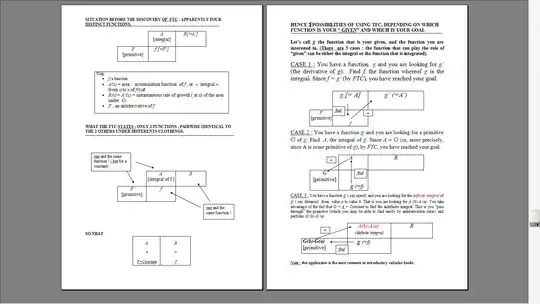The Fundamental Theorem of Calculus (there are two parts, but it seems you're focusing on the second part) essentially says that we can compute an integral using anti-derivatives (As J.W. Tanner says in the comments). Here is the exact text of the Wikipedia article:
The integrals discussed in this article are those termed definite integrals. It is the fundamental theorem of calculus that connects differentiation with the definite integral: if $f$ is a continuous real-valued function defined on a closed interval $[a, b]$, then, once an antiderivative $F$ of $f$ is known, the definite integral of $f$ over that interval is given by
$$\int_a^b f(x) \text{ d}x = F(b)-F(a)$$
A definite integral is your classic "area under the curve integral." When calculus was first being (discovered/invented?), the definite and indefinite integral were thought of as completely separate. The indefinite integral finds the antiderivative of a function Essentially, this reverses differentiation. Whereas the derivative of $f(x)=x^2$ is $f'(x)=2x$, the antiderivative of $f'(x)=2x$ is $f(x)=x^2$. This is represented symbolically as $\int2x \text{ d}x = x^2$.
A definite integral, however, comes from the Riemann Sum. It allows you to calculate the area under a curve, essentially. It is defined over a closed interval, which is represented by $a$ and $b$ in the above integral. Now, what the Fundamental Theorem of Calculus (FTC) shows us is a method of calculating a definite integral. Although Wikipedia says that the FTC connects integration and differentiation (which it does), the more important idea is the connection between indefinite and definite integration. Let's do an example to demonstrate this.
Calculate the area under the curve $f(x)=2x$ over the interval [1,2]
Now the first thing we need to do is represent this problem symbolically,
$$\int_1^2 2x \text{ d}x$$
Here's where the FTC comes in. The above integral is a definite integral, but we need to know the antiderivative of $2x$ (remember, the antiderivative is the opposite of a derivative. The antiderivative of $2x$ is the function whose derivative is $2x$)
We can represent the antiderivative symbolically,
$$\int 2x \text{ d}x$$
Notice the lack of bounds on the above integral. This is because it is an indefinite integral. We can solve using the power rule
$$\int 2x \text{ d}x = x^2$$
Now, we can check this by differentiating $x^2$ using the power rule (for derivatives). Remember, the antiderivative of $2x$ is the function whose derivative is $2x$, so the derivative of $x^2$ should be $2x$. You'll find that the derivative of $x^2$ is, in fact, $2x$. Thus, $F(x) = x^2$
Now we can apply the FTC
$$\int_1^2 2x \text{ d}x = F(2) - F(1)$$
$$\int_1^2 2x \text{ d}x = 2^2 - 1^2$$
$$\int_1^2 2x \text{ d}x = 4 - 1$$
$$\int_1^2 2x \text{ d}x = 3$$
